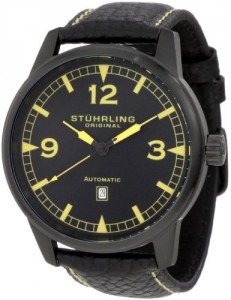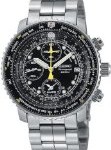 The old saying “time stands still for no man” is not only true, but may well explain why watches have played such a major role in people’s lives for hundreds of years.
The old saying “time stands still for no man” is not only true, but may well explain why watches have played such a major role in people’s lives for hundreds of years.
From the first pocket watches that were worn by railroad pioneers, to those intricate and helpful aviator watches for men that pilots found helpful in fighting wars, watches have been an intricate part of many important moments of history.
But what about the origin and history of watches themselves?
How did these fashionable and functional timepieces come into existence, and how have they changed over the years and decades since they were first invented?
The Beginning Of Timepieces
From the beginning of time, man has been consumed with keeping track of time.
In the very beginning, man used the sun and shadows to gauge time, and later sun dials, and even the shadows of the Pyramids in Egypt were used to give man some indication of the time of day.
Of course these early ways of telling time were stationary and not really accurate.
It wasn’t until the 15th century and the invention of spring driven clocks that there was even the possibility of wearable timepieces.
The First Wearable Clock Watch
Although no one knows for sure, it is often believed that the first wearable clock/watch was invented by Pete Henlein in 1504.
Although this watch was far from accurate, and was worn on a pendant around the neck, it was the first time that man could easily carry his time piece with him.
These first “watches” didn’t have a minute or second hand and had to be wound twice a day.
It wasn’t until the 17th century that pocket watches entered the picture, and it was the invention of the pocket watch that led to the very first wearing of a watch on the wrist, when mathematician and philosopher Blaise Pascal began attaching his pocket watch to his wrist using a piece of string.
It would be many more years, however, before the idea of a wrist watch really caught on.
Military Men Popularized The Wrist Watch
In the 1800s, women royalty and those who were wealthy, began sporting jeweled encrusted wrist watches as a matter of fashion.
Men found these watches to be effeminate and shunned wearing them, preferring the pocket versions they had grown to accept.
However, war was about to change all that, when in 1880, the German Navy demanded that a durable male version of a wrist watch be made.
This allowed troops to see the time at a glance rather than have to dig through pockets.
Soon other military branches caught onto the idea, and by 1920, the wrist watch was increasing in popularity, not only among servicemen, but also among those who could afford this newest invention.
Over time, changes in attitude and technology made watches more and more accurate and affordable, and soon watches were in demand from people of all economic levels.
Improvements continued, and the first clunky mechanical watches gave way to quartz watches, and then in the 1970s, to digital watches.
Today, with the invention of cell phones that have built in clocks, watches aren’t quite as popular as they once were, but most people still own one or two watches that they wear on a daily basis, or at least on occasion.
As technology continues to grow, the ability to keep track of the passing of time will continue to improve as well, and people will continue to purchase watches, both as a means of keeping track of time and as a fashion for generations to come.
Related Information
You might be interested in our extensive reviews and comparison table on the best aviator watches for men currently available.
Enjoyed this article? Share it with others








 Facebook
Facebook Pinterest
Pinterest Twitter
Twitter Google+
Google+